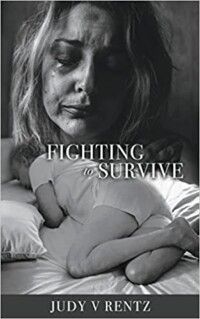Title: Fighting to Survive
Author: Judy V. Rentz
Publisher: Xulon Press
ISBN: 166283196X
Pages: 72
Genre: Medical
Reviewed by: Dan MacIntosh
Pacific Book Review
Many people will tell you that one of their main goals in life is to seek pleasure but avoid pain. However, Judy V. Rentz’s book, Fighting to Survive has little to nothing to do with any kind of pleasure-seeking. Oh, but it has a whole lot to do with avoiding pain. The book chronicles Rentz’s fourteen-year struggle to deal with – and hopefully find a cure – to an ailment known as pudendal nerve disease. If that’s a new term to you, don’t feel bad; it’s also a term — Rentz soon found out — that is relatively unknown to among doctors. This is, indeed, a book about survival.
Be forewarned, this is many times a painful book to read. Not that it is badly written, or anything like that, but because the reader can’t help feeling – if at least emotionally – some of the pain Rentz has gone through. Rentz, a mother and grandmother, sometimes describes her pain as being like that of childbirth. Only, most moms will tell you the pain is worth it all because the result is a newborn child. For Rentz, though, it’s all pain, no gain. This pain, which effects the lower female torso, is something Rentz other times describes as being like having your tailbone torn from your body. Yikes! If you have trouble reading about another person’s suffering, some to this book may be difficult to take in. It’s also relentless, in that the book is not broken up into different chapters. Instead, it’s one long essay, if you will, detailing Rentz’s health drama.
Much of the book involves Rentz’s search for someone, anyone, who can take her pain away. She and her husband spend hours of Google searches and travel miles to meet with various doctors. Understandably, this quest oftentimes leaves Rentz feeling disappointed and frustrated. Each doctor she sees must also examine her, which only causes her more physical pain.
Rentz is an openly spiritual person. She is not shy to write about her prayer life, church life and respite provided by singing in a church choir. She is also honest about her doubts. She doesn’t just pray to God; she literally cries out to Him. She is also honest enough to admit how suicide has crossed her mind more than a time or two. Yes, she loves her husband, her children, and grandchildren. However, the pain makes her feel like she can’t live with it any longer, at times. She can sometimes feel like death is her only release.
The best aspect of Rentz’s writing is her honesty. This is not a cool, calm and collected telling of this one women’s medical history. She writes as though she’s sitting in the room with you and telling her story. The reader’s emotions rise and fall with Rentz’s. When she thinks she’s found the doctor that can finally cure her, the reader crosses fingers and toes and hopes right along with her. Then again, when her hope seems dashed, the reader feels empathetically defeated.
The book’s conclusion is somewhat disappointing. She never finds a cure for all her pain. The reader is left with the knowledge that Rentz will likely need to live with pain for the rest of her life. On a brighter note, though, Rentz’s story of survival is an inspiration to anyone suffering the way she does. Even if they don’t have pudendal nerve disease, but have some other kind of continuous physical pain, they can be encouraged to hang in there because Rentz hasn’t given up.
Let’s hope this biography of sorts leads to more research that ultimately leads to a cure. Nobody should have to fight to survive, the way Judy V. Rentz does. May this be the last book written about this cruel disease.


